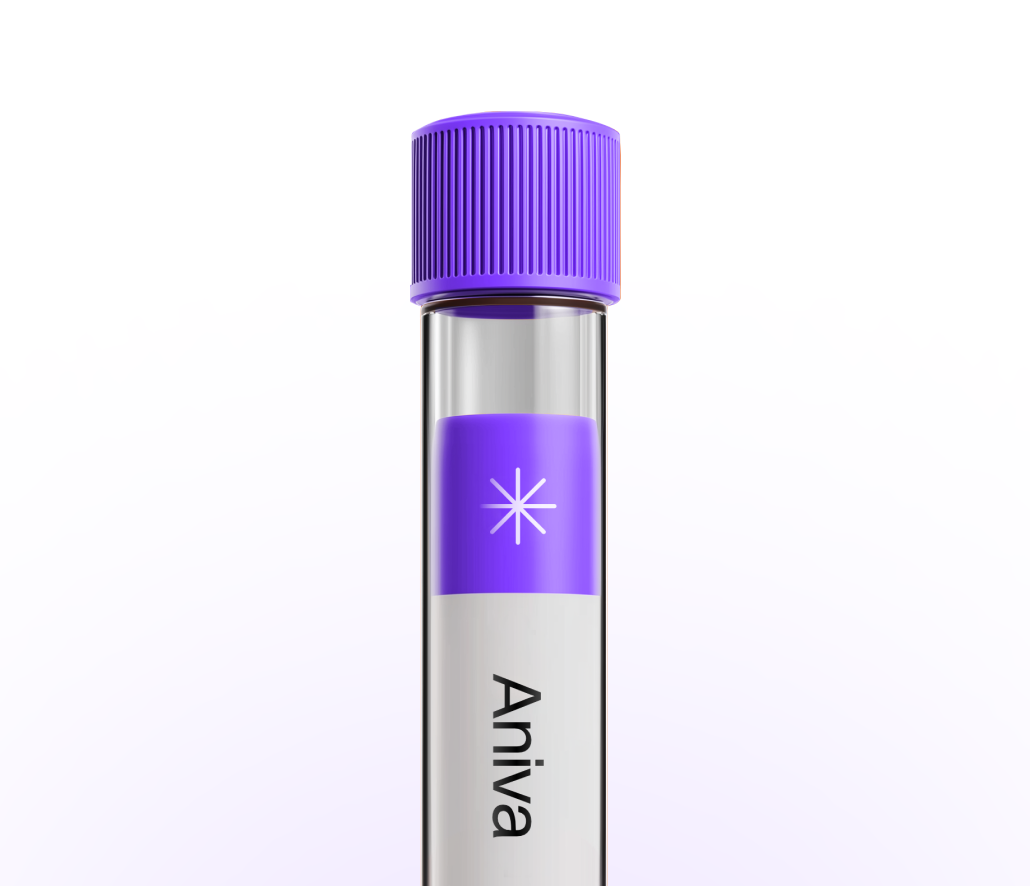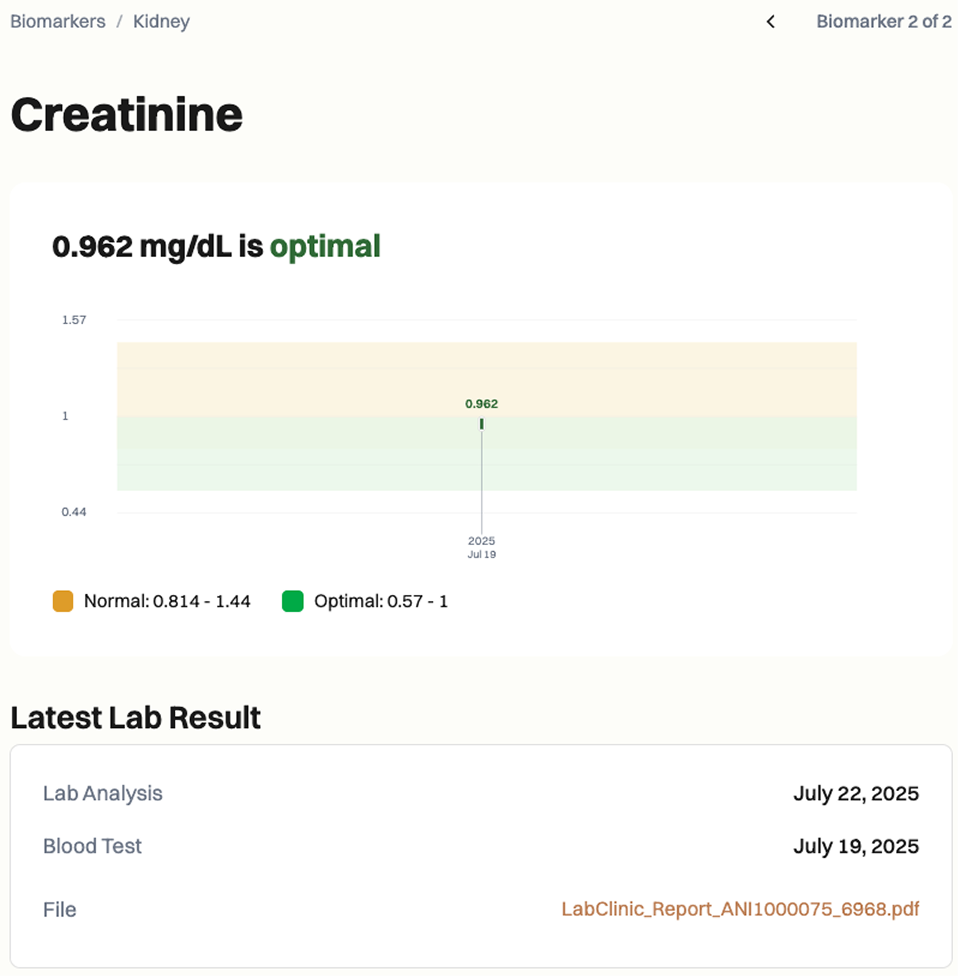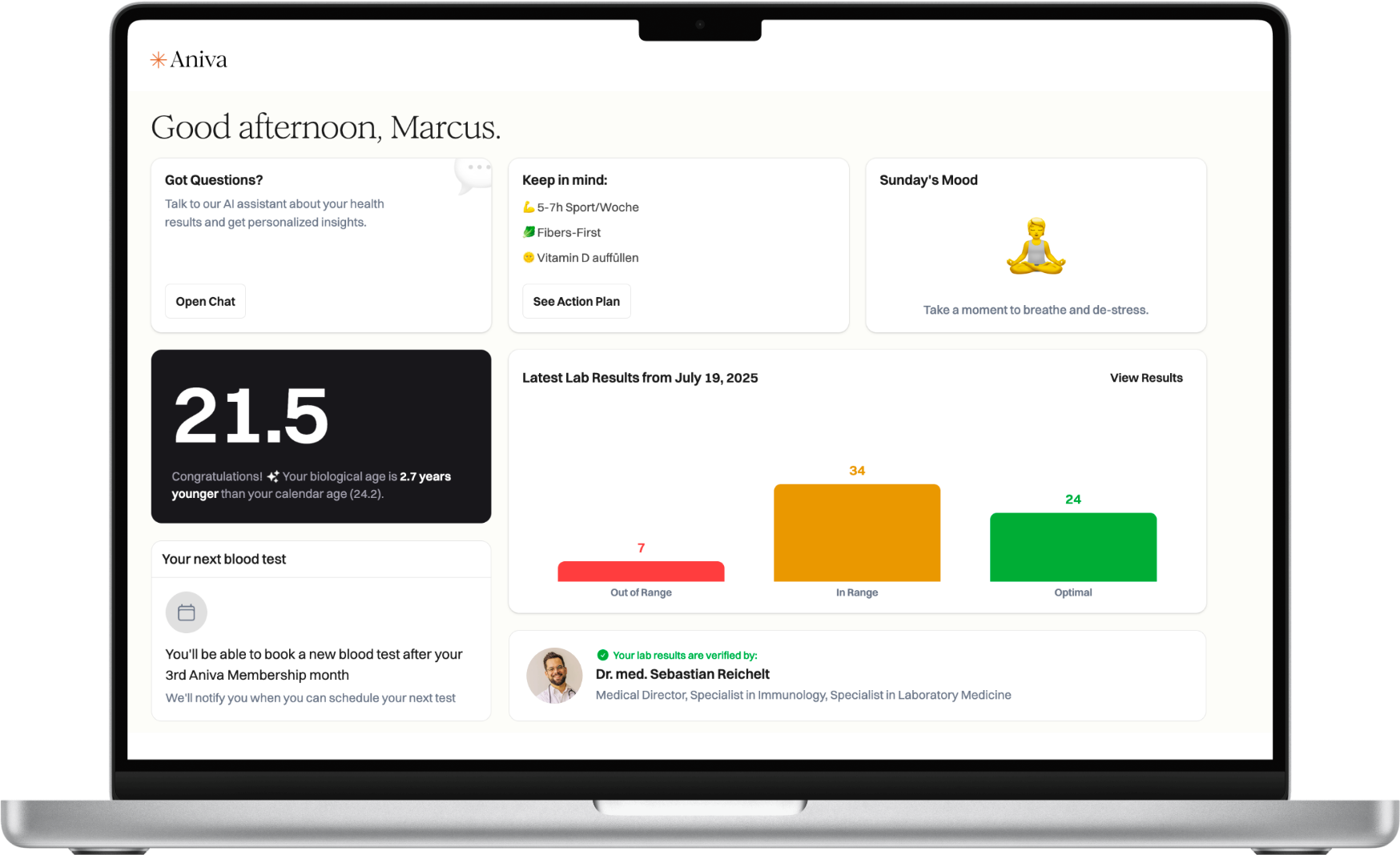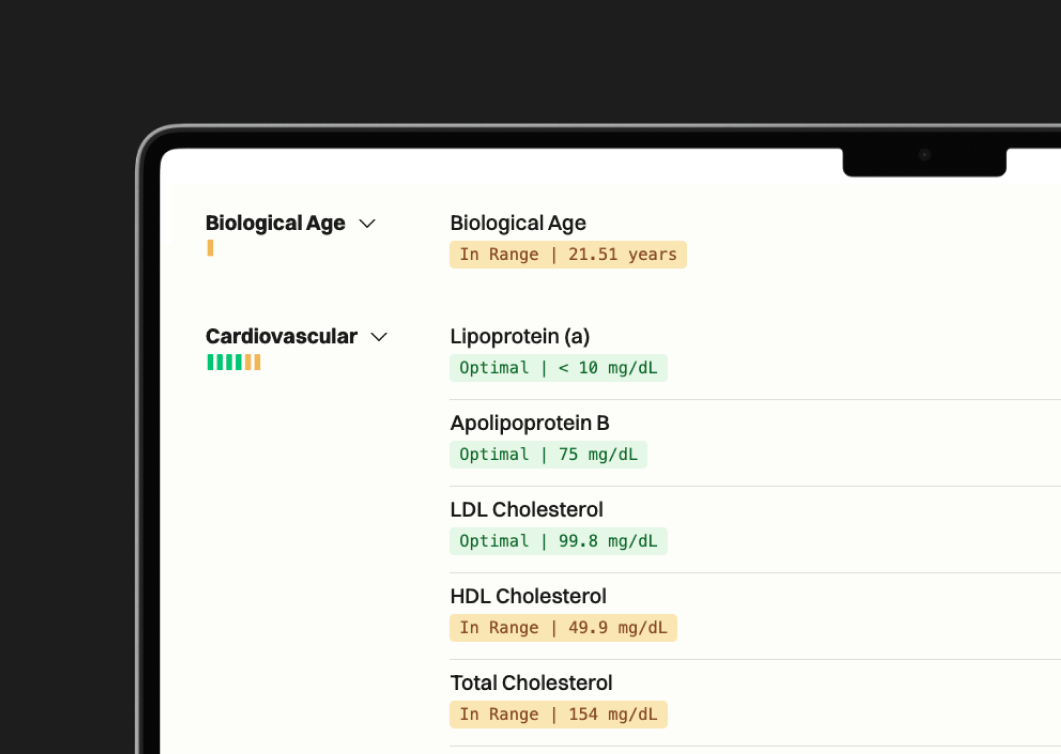Apolipoprotein B (ApoB) counts LDL-like particles in your blood—an important clue to heart risk.
Securely stored in EU
Cancel anytime
Test 100+ biomarkers

Less than 5 minutes waiting time. One
simple test at one of our 20+ locations.
Get your lab reports within one week.
Accessible on our app and per PDF.
All your health records stored
in a single, convenient place.

Apolipoprotein B (ApoB) helps estimate the number of LDL-type particles that can build plaque. Clinicians use it to refine heart risk, especially when triglycerides are high, LDL cholesterol looks normal, or metabolic syndrome is present. It also helps monitor response to cholesterol-lowering therapy and guide next steps like lifestyle changes or medicine adjustments. You can test this marker with Aniva across Germany and Finland.
Apolipoprotein B (ApoB) helps estimate the number of LDL-type particles that can build plaque. Clinicians use it to refine heart risk, especially when triglycerides are high, LDL cholesterol looks normal, or metabolic syndrome is present. It also helps monitor response to cholesterol-lowering therapy and guide next steps like lifestyle changes or medicine adjustments. You can test this marker with Aniva across Germany and Finland.
High: Suggests more atherogenic particles and a higher chance of plaque buildup; discuss lifestyle steps and whether treatment should be adjusted. Recheck after changes to see trend.
Low: Indicates fewer atherogenic particles; often seen with effective therapy. If unexpectedly low, confirm with a repeat test and review context. Trends over time, alongside LDL cholesterol and non-HDL cholesterol, give the clearest picture.



Common factors that may affect results include recent illness or inflammation, pregnancy, heavy alcohol use, strenuous exercise within 24 hours, and dehydration. Medicines such as statins, PCSK9 inhibitors, fibrates, niacin, estrogen therapy, and steroids can change ApoB levels. High-dose biotin supplements may interfere with some immunoassays; check your supplement and pause only if advised. Try to keep the time of day and posture similar between repeat tests.
Special situations include pregnancy, acute illness, major weight change, or recent surgery—confirm unexpected results and consider retesting when stable.
What do my ApoB results mean? Higher ApoB suggests more LDL-like particles that can contribute to plaque. Lower ApoB suggests fewer atherogenic particles and often reflects effective therapy.
Do I need to fast for this test? No. ApoB is valid without fasting unless your clinician advises otherwise.
What can affect my results? Cholesterol medicines, PCSK9 inhibitors, fibrates, niacin, estrogen, steroids, recent illness, pregnancy, heavy alcohol, and hard workouts can shift values.
How often should I test ApoB? If starting or changing treatment, recheck in about 6–12 weeks. For routine risk tracking, many people check yearly—follow your clinician’s advice.
How long do results take? Most labs report ApoB in 1–3 business days after your sample arrives.
What should I discuss with my clinician? How ApoB fits with LDL-C, non-HDL-C, family history, and your risk goals, plus lifestyle and medication options.



One annual blood test (100+ biomarkers)
Clinician-reviewed insights
Personalized action plan
Access to our AI Concierge
Access to curated products


63%
44%
70%